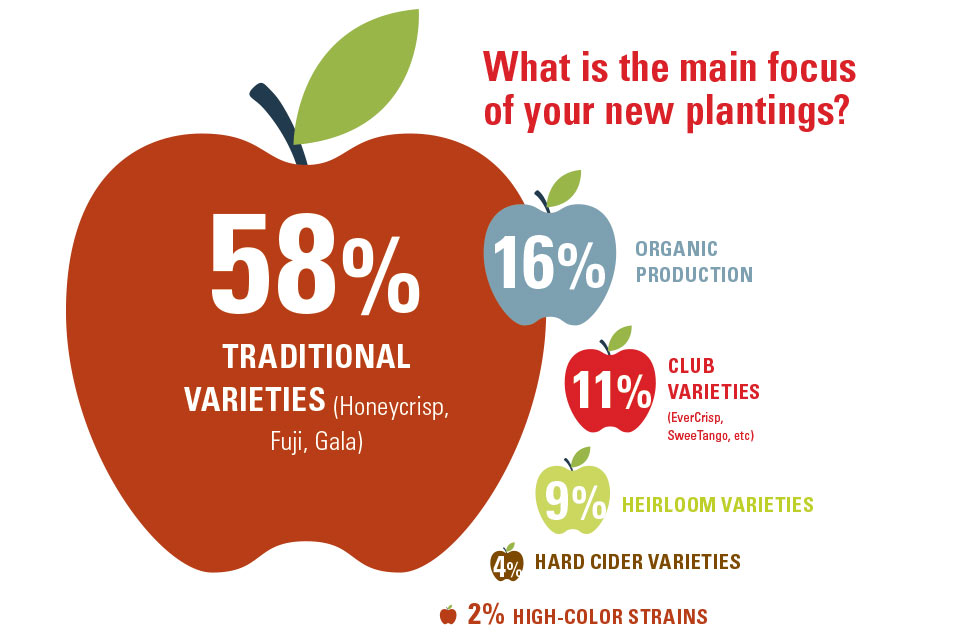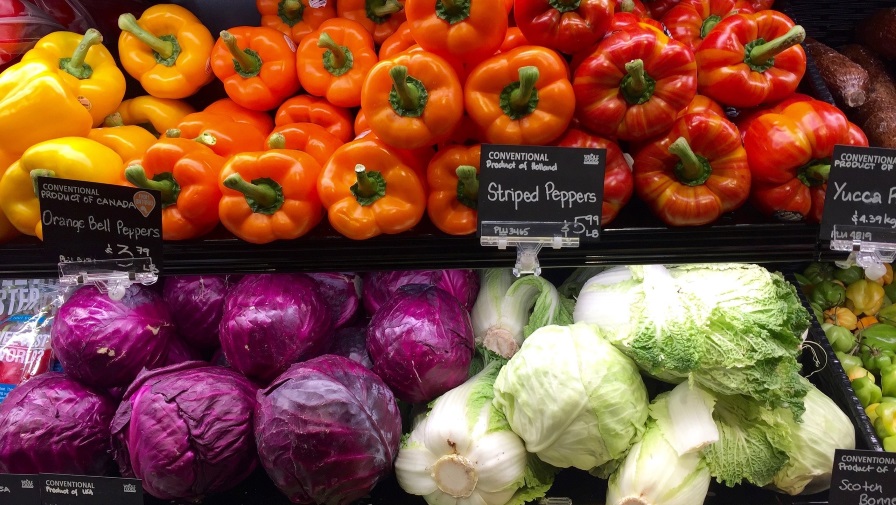Traditional Varieties Still the Focus of Pome Plantings
Moneymakers — that’s what traditional apple varieties such as ‘Fuji,’ ‘Gala,’ and ‘Honeycrisp’ are often referred to in the industry. If grown well, they can be extremely profitable for you. So it’s no surprise more than half — almost 57% — of apple growers responding to our 2017 State of the Industry (SOI) survey says most of their new planting plans would focus on these traditional varieties.
A Midwestern grower says newer strains of ‘Honeycrisp’ including ‘Premier Honeycrisp’ and ‘Firestorm Honeycrisp’ make up some of these traditional varieties being planted in his orchards.
Another grower from the Midwest, whose operation has been in business more than 100 years, says plantings will be a “mix of traditional, club, and new varieties.”
Organics, though, are on the rise. Growers say 16% of new plantings will be organic. In fact, a Northwestern grower with more than 500 acres says making the switch to organic production helped improve his bottom line in 2016.
Aside from boosting the bottom line, growers also want varieties that show some disease resistance, especially for fresh-market heirloom sales as well as for use in hard cider.
“Cull underperforming heirloom varieties many with fire-blighted shoots,” says a grower in the Northeast. This grower also is looking to varieties that are “disease resistant, [such as] ‘Liberty,’ ‘Jonafree,’ ‘Enterprise.’”
Another Northeast grower whose operation has been in business more than 100 years says heirloom varieties are the focus of his plantings.
“Local high-end processing,” he says is the destination for his apples.
Flavor, as a grower in the Midwest indicated, is also important.
A Midwestern grower and direct marketer in business for more than 25 years says he is planning to continue to convert his older blocks to high-density plantings.
“Planting newer, non-club varieties,” he says is also a focus, including “exciting new open release varieties like ‘KinderKrisp.’”
‘KinderKrisp,’ a ‘Honeycrisp’ cross that bears smaller apples, perfect for lunches, was also being planted by another Midwestern direct marketer and grower in operation for less than 25 years.
Pome Fruit Researchers, Advisors, Allied Respond
Growers are keenly aware of new technology becoming more available in the pome fruit industry. In fact, researchers are finding mechanical harvesters to be the topic of many questions from growers.
One crop advisor in the Southeast says growers are concerned about the “lack of serious research developing the needed equipment.”
A researcher in the West says growers are looking for “labor-saving devices.”
Overplanting is also on growers’ minds, as a member of an ally to the industry from the Northwest says. Growers are taking note as more trees are being planted.
“The seeming endless increase in apple plantings in Washington in particular; what will it mean for future profitability,” he says.
Growers, though, are capitalizing on the demand for great-tasting fresh apples, he says, by planting “more club/managed varieties; continued high density with orchard design conducive to maximum mechanization.”
A crop advisor in the Northwest says growers are looking to him to answer the question of “’What do I plant?’ The new club varieties of apples may be profitable or may fade quickly, big commitment.”
With more trees going in the ground, growers are still finding difficulty trying to locate rootstocks they want.
A crop consultant from the Northeast says growers are still challenged by the “availability of trees, new rootstocks, and varieties.”
Disease pressure is a challenge of pome fruit growers, says a crop consultant in the Northwest. Many growers are asking him for advice on how to tackle “bitter pit in apples.”
A researcher in the West says a big focus of his work is “Developing varieties that will improve the fruit industry, developing more farmer-friendly varieties that increase the farmers’ profits.”
He says flavor, shipping ability, and Brix are main targets to help deliver fruit that will increase profitability.
An advisor in the Northwest says growers are constantly asking him “How will you make me more profitable?”
He says, “Growers are focused more than ever on profitability, due to shrinking margins (because of rising input costs like water, labor, regulations, pest control, etc.).
He also says growers are “growing more with less” but when they do use products, organics, and improving the soil microbiology is a key part of using any inputs.
Pears Coming Into Focus
Along with apples, pears are also a focus for many pome fruit growers around the country. In fact, more than 54% of pome fruit growers who took our SOI said they grow pears, with nearly 5% planning to add pears in 2017.
In fact, respondents say pears are a big opportunity for growth within the tree fruit industry.
One industry partner in the Northwest says growers are asking him “Are there any new pear varieties coming out soon?”










